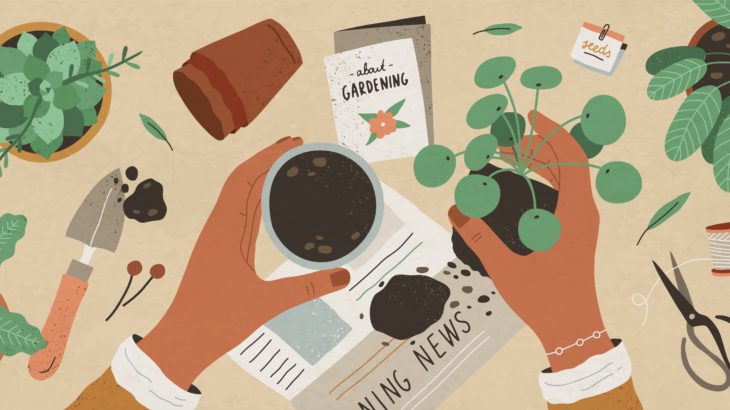Note from Lauren: This month’s newsletter is written by our newest staff member, Althea MacDonald, LPC HTR, PsyD. In addition to using the familiar modern therapy modalities (CBT, DBT, Mindfulness, Play Therapy), Althea is also a Registered Horticultural Therapist. Below she shares her expertise about the impact of plants (and caring for plants) on our mood and overall well being. I know we can all use a good dose of Mother Nature this Spring, so please read on!
This Spring promises to bring a welcome return to outdoor activities and the green lushness of plants. Caring for plants offers multiple personal benefits. In fact, an aim of Horticultural Therapists is to enable and empower clients to improve their intellectual, social, psychological, and physical well being by using plants and plant-based activities. But, by giving plants a chance, anyone can experience these healing benefits at home, both indoors and outside.
The beauty of plants is that they respond to any caregiver. Plants are also universally appealing and familiar, dynamic and alive; they are non-judgmental and non-discriminating, and they stimulate all the five senses.
Here are some ways to tap into the healing power of plants:
1. Start a daily mindful walk outdoors but as you walk, pay attention to your surroundings, engage your senses, try not to let your mind wander to your “to do list,” and look for the natural beauty in your surroundings. In these days filled with more screen time, it is so important to give yourself a total break and ease into the rhythm of nature.
2. Nurture a houseplant, and no worries, anyone can have a green thumb! Just try not to overwater. Some examples of durable plants include pothos, snake plant, rubber plant, ZZ plant, spider plant, peace lily, and succulents. Research indicates various benefits of houseplants such as improving indoor air quality, reducing stress levels, boosting productivity, improving outlook on work, and recovering from illness faster. Working with plants can also be therapeutic and provide a sense of accomplishment. Plants are aesthetically pleasing and make our surroundings more attractive. Caring for houseplants can be easy, but consider some essentials, such as temperature, adequate lighting, watering and nutrients.
3. Grow something easy and fun indoors like wheatgrass which looks like emerald green grass but when juiced has wonderful nutritional benefits. Growing wheatgrass is also a great activity to do with kids who will love watching the grass sprout and grow day by day. You won’t need many supplies but should start with a small bag of “Hard Winter Wheat Seeds,” “Hard Red Spring Wheat,” or “Wheatgrass Berries” that you can find online or in health food stores. Check out this article or this video for detailed instructions.
4. Plan for planting outdoors in the spring. Timing is everything. From March to April, pansy or viola flowers as well as early spring crops, such as spinach, lettuce, radishes, peas, chives, and parsley can tolerate the temperature dips. This Farmer’s Almanac article outlines the best times to start various vegetable and herb seeds outdoors, or transplant seedlings outdoors for spring in Northern NJ.
Here’s to adding some leafy greenery in your life,
Althea M. MacDonald, MA LPC HTR


